Serena Williams can join elite group of only five calendar Grand Slam winners

The start of the 2015 U.S. Open is more than a month away but the stakes are already set: World No. 1 Serena Williams will look to win her fourth consecutive major title of the year and 22nd major title of her career, tying Steffi Graf’s record. Most notably, if Serena captures the title in New York she would also complete the calendar year Grand Slam—winning all four of the major tournaments (Australian Open, French Open, Wimbledon and U.S. Open) in one calendar year—and join an elite group of only five singles players who have accomplished the feat. Here’s a look at the men and women that have made history and completed the calendar year Grand Slam, featuring exclusive clips from stories in the SI Vault.
Don Budge
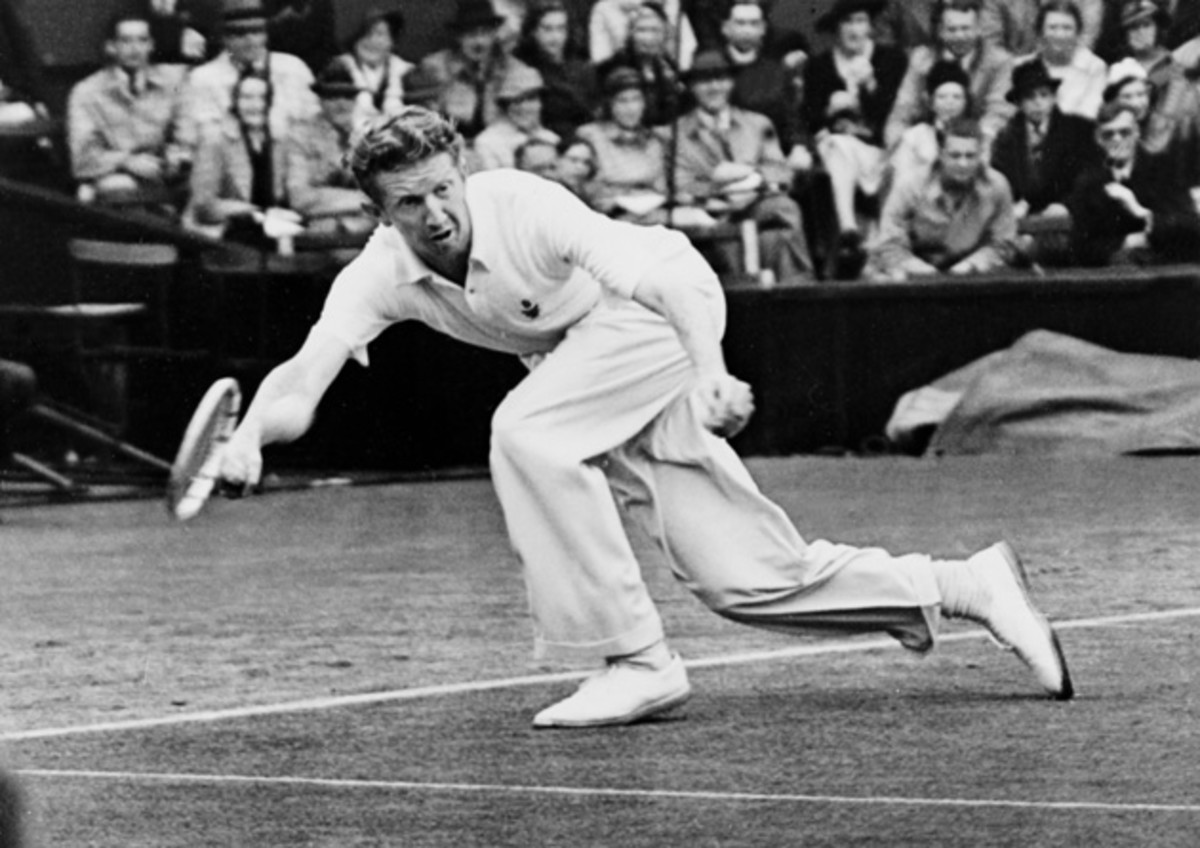
In 1938, Don Budge was the first to complete the Grand Slam, an accomplishment thought to be unattainable at the time. He turned pro after winning the Grand Slam and beat esteemed players Ellsworth Vines and Fred Perry. He also played for the U.S. Davis Cup team from 1935–38, winning 25 of 29 matches, but gained the most fame for one particular match. In Budge’s obituary in the Feb. 7, 2000 issue of Sports Illustrated, Frank Deford wrote of the storied moment in tennis:
"In 1937, just before he and Gottfried von Cramm stepped onto the court in the Davis Cup semifinal at Wimbledon (the tie was held at a neutral site), Hitler telephoned Cramm. 'Ja, mein Fuhrer,' Cramm said repeatedly into the phone. His victory would most likely have handed the Cup to Nazi Germany and kept it there throughout the war, possibly to be lost forever. But with the magnificent match in Cramm's grasp, 4–1 in the fifth set, Budge changed tactics, started taking the ball on the rise and won 6-8, 5-7, 6-4, 6-2, 8-6.
“Budge would have turned pro after that year, but he dreamed up the concept of winning the championships of the four nations that had won the Davis Cup—Australia, England, France and the U.S. Thus did Budge create the Grand Slam. And he positively breezed. I asked him once to describe the highlights. ‘You know, not a whole lot happened that year,’ he said. Budge was just too good. In fact, what he remembered most about his Grand Slam was earning a private concert from the great cellist Pablo Casals after winning the French.”
With the termination of the pro tour in 1942, Budge enlisted in the Army Air Force and at the beginning of 1943, he tore a muscle in his right shoulder, which ultimately hurt his playing career. He retired in 1955 with 10 major titles, six of which were Grand Slams.
Maureen Connolly
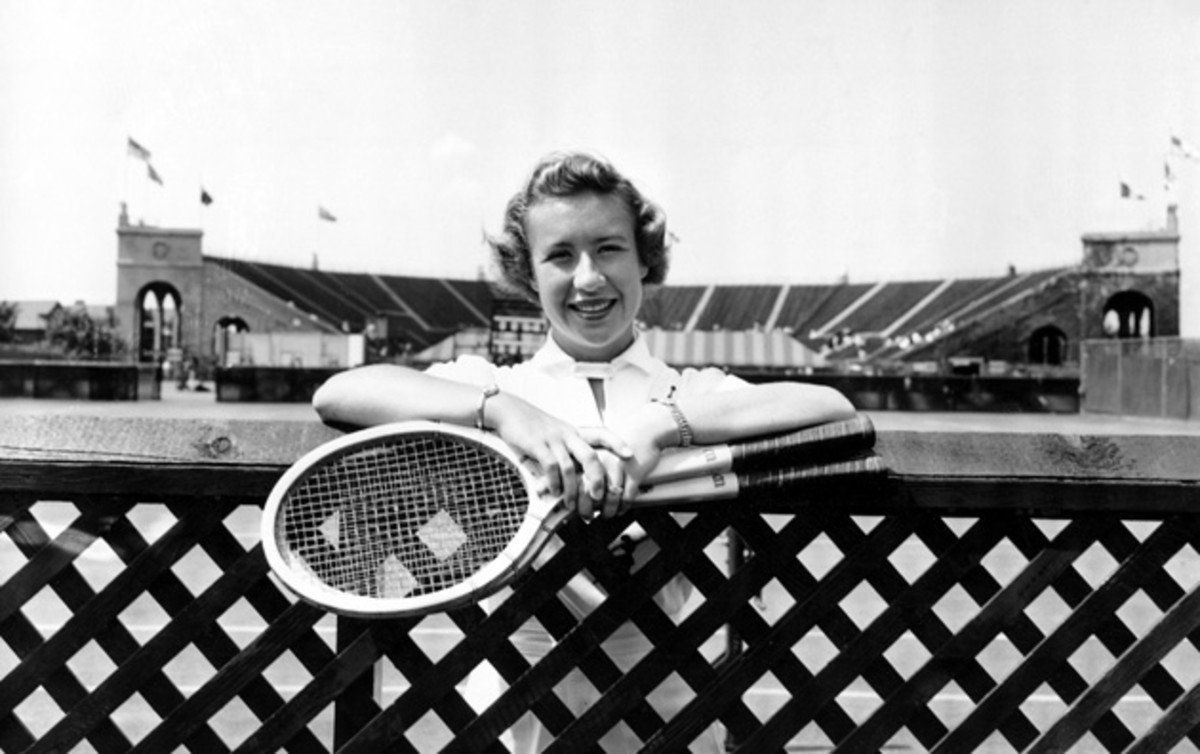
Known as “Little Mo,” Maureen Connolly’s success on the tennis court began in 1951 when she won her first U.S. Open title at the age of 16. In 1953, Connolly became the first woman to win a Grand Slam, earning a win over Julie Sampson Haywood at the Australian Open and then Doris Hart in the finals of the French Open, Wimbledon and the U.S. Open. Her career tragically ended a year later when she crashed into a cement-mixing truck while riding on horseback in San Diego. Before retiring in 1955, Connolly won the last nine Grand Slam tournaments she played including 50 consecutive singles matches. In the Aug. 29, 1988 issue of Sports Illustrated, Deford wrote about Connolly and her place in tennis’ most elite group of Grand Slam winners:
“Connolly is perhaps the least well known of this select group. But had her career not ended less than a year after she won the Slam, she might well be the standard against which all female players are measured. [Steffi] Graf so reminds many of Connolly—in her style and dispatch as well as her precocity—that whatever Graf accomplishes will reflect glory upon Connolly.
“Little Mo won her first Grand Slam title, the '51 U.S. Nationals, at 16, and was still a teenager when she won her last major, Wimbledon, in '54. All told she won nine Grand Slam tournaments, including six in a row. Connolly could be absolutely merciless with opponents—she gave up only 11 games in the entire Australian championship of '53—forcing herself to despise the poor woman across the net. "This was no passing dislike," Connolly wrote, "but a blazing, virulent, powerful and consuming hate."
Rod Laver
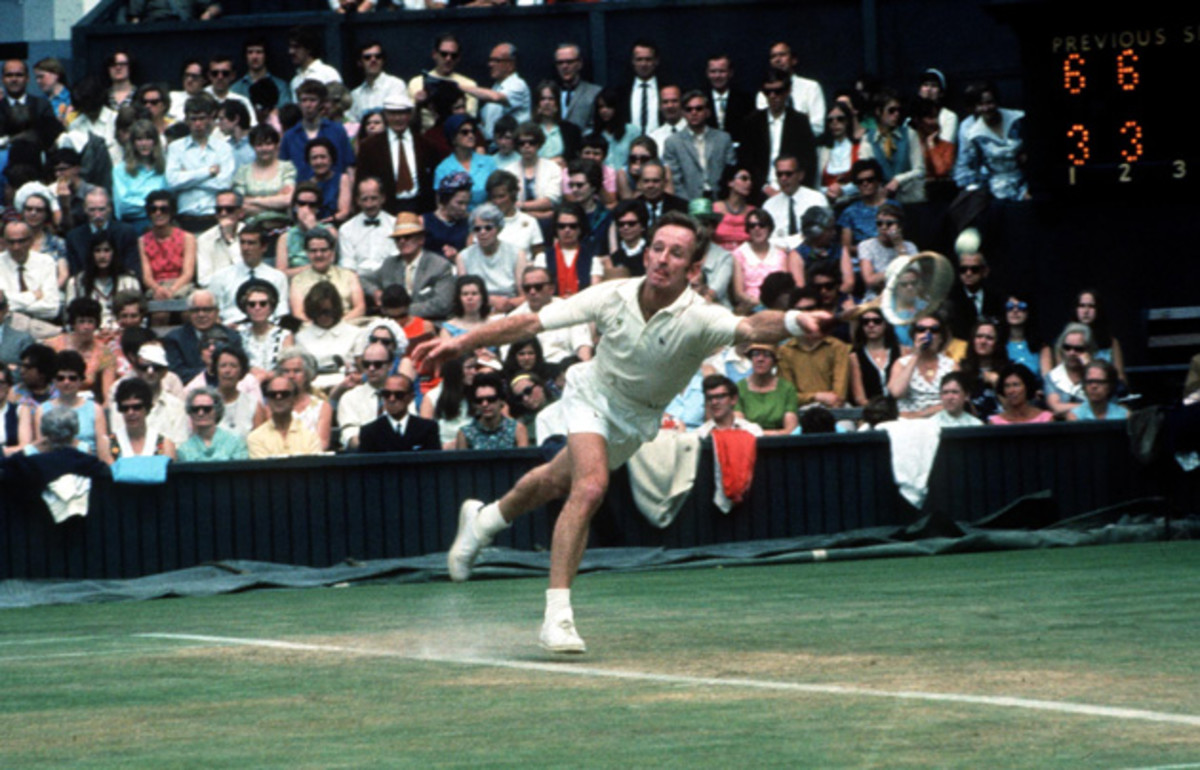
“Rocket” Rod Laver won his first Grand Slam titles in doubles in his home country of Australia and in mixed doubles at Wimbledon in 1959. A year later, he claimed his first singles Grand Slam title in Australia. Those titles were just the beginning of a 13-year pro career that would see him rack up 200 career singles titles, including 11 Grand Slams. He still holds the all time male singles record of 22 titles in a single season (1962). In the Sept. 7, 1962 issue of Sports Illustrated, Rex Lardner wrote about Laver’s first Grand Slam achievement:
“Laver uses his wrist more than any other player in history except Frank Kovacs and he is the first player to combine a whipping wrist action with near-perfect control. Laver can hit a ball fiat, with topspin or with underspin, equally well from both sides. Like a squash player, he adds power to a shot and disguises its direction by putting wrist into his shot at the moment of impact. Few players have his repertory of strokes, and no player has been able to mask his shots better. He has tremendous kick on his serve, and his second serve finds its twisting way so deep in the service court that it often hits the chalk. But perhaps his greatest ability is to make forcing shots of returns that most players would be happy to get back at all. He is cool, too. Last July the jet that was carrying him to matches in Hilversum, in The Netherlands, suddenly dived sharply to avoid colliding with another plane. Thirteen passengers had to be carried off the plane by stretcher-bearers, while the remainder left considerably shaken by the experience. Laver changed clothes, marched out onto the court and easily defeated his opponent. A Dutch official commented, ‘He nearly gets killed and then he comes out here and plays as if nothing had happened.’ Add to all this the most effective smash in amateur tennis today, the most lethal serve any man under 5 feet 10 has yet uncorked, an uncanny ability to hit finishing volleys from almost anywhere in midcourt (Laver never just puts the ball in play) and the fact that his left-handed shots curve and spin exactly opposite to what his opponents are accustomed to—and Rod Laver becomes a formidable opponent indeed.”
After the start of the Open Era in 1968, Laver won the first Wimbledon championship of that year and the following year he became the only player in singles history to win a second Grand Slam—a feat that has yet to be matched by any player today.
Margaret Court
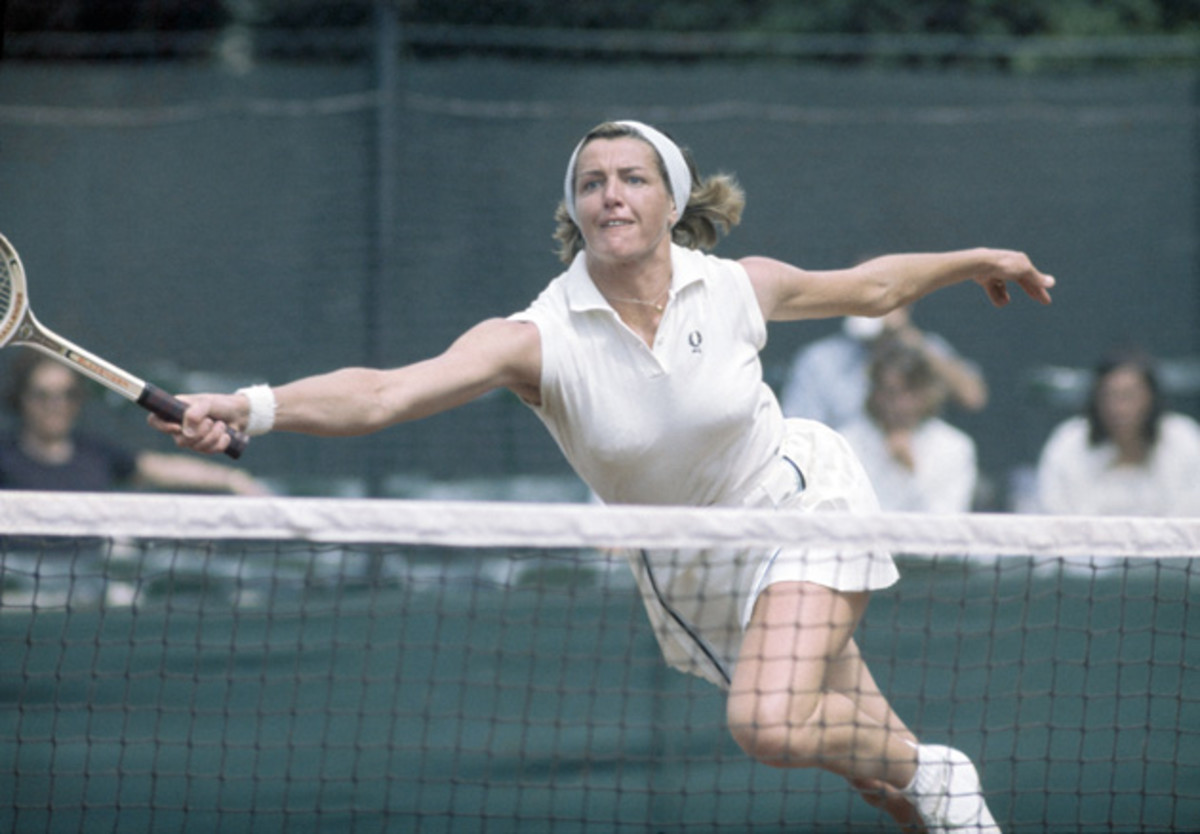
Like Laver, Margaret Court’s career also spanned the pre-Open and Open eras. Court won her first singles title in Australia in 1960 and her dominance at her home Slam continued for 12 years, as she won a record 11 titles there in her career. In 1970, Court became the first woman of the Open Era to win the Grand Slam. As she attempted to complete the Slam, Gwilym S. Brown wrote about her unrivaled determination and style of play in the Sept. 14, 1970 issue of Sports Illustrated:
“Mrs. Court, now 28 years old, is a sweet, simple country lass from New South Wales. Her tennis game, of course, is neither of these things. It is powerful, destructive, relentless and seemingly without a flaw. Definitely not on the sweet side. She is a superbly athletic animal, the physical equal of a great many men, but determination is really Margaret Court's chief trademark. For almost 10 years—outstanding even among the Hards, the Buenos and the Moffitt-Kings—this passion to excel has made her the dominating figure in women's tennis.”
Before retiring in 1977, Court achieved a 1,180-107 overall record and won 24 of 29 opportunities for major titles.
Steffi Graf
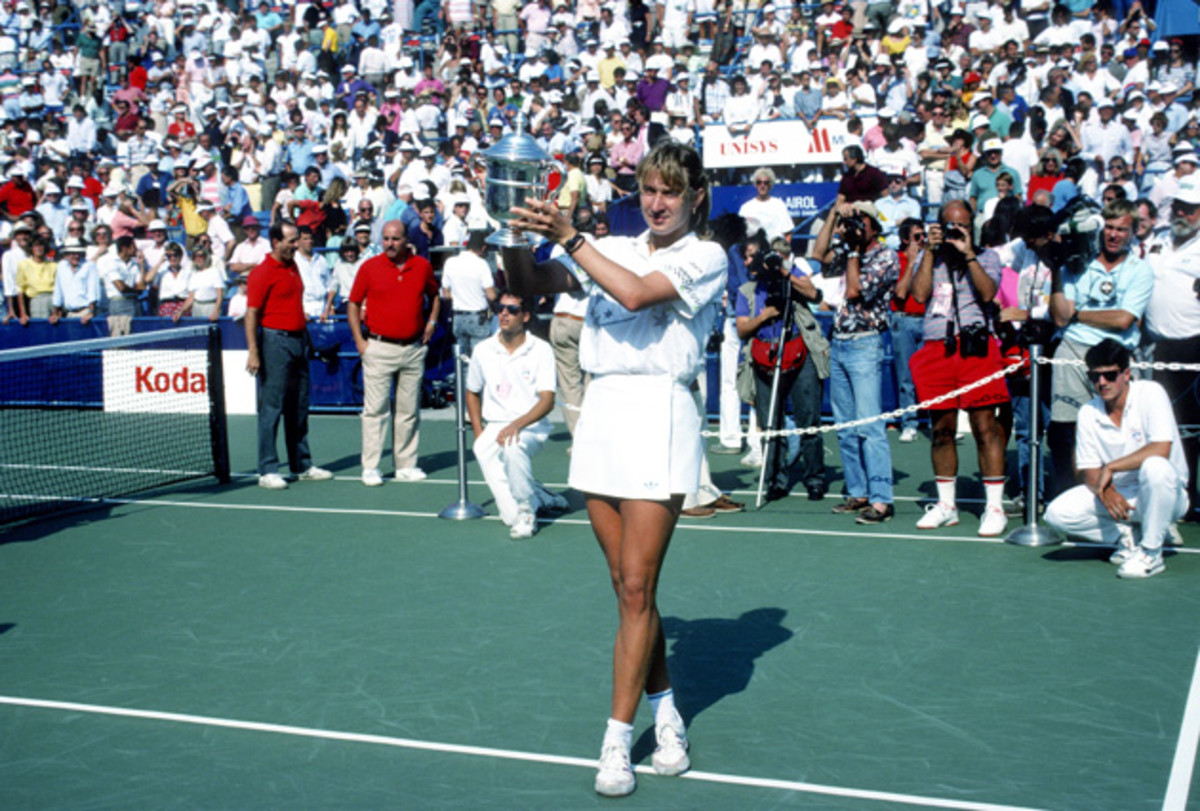
The last player to accomplish the Grand Slam, Steffi Graf won her first major title in 1987, defeating Martina Navratilova at the French Open at the age of 17. Just a year later, the German beat Chris Evert at the Australian Open, Natalia Zvereva at the French Open, Navratilova at Wimbledon and Gabriela Sabatini at the U.S. Open to become the third woman to capture the Grand Slam. Just weeks later, Graf became the only player to win the Golden Grand Slam, or titles at all four majors and an Olympic Gold Medal in the same year. Following her win at the U.S. Open, Curry Kirkpatrick wrote about her historic tennis moment in the Sept. 19, 1988 issue of Sports Illustrated:
“Perhaps Graf herself—so stern, so relentless, so impassive (just another day at the guillotine), so downright terrific—is to blame. Her emotions seem to run the gamut from A to B: from apathy to boredom. Surely she knew what she was accomplishing. Certainly she realized her place in history. "To achieve this at such an early age would be great," said Graf earlier in the tournament.
“But after she had done so, she was asked if this was the greatest day of her life. ‘It's hard to say,’ said Graf. ‘It needs some time. The next couple of days will be good.’ Then she was gone, flying home to Bruhl, West Germany, almost before night had fallen on an achievement that even the normally phlegmatic [Ivan] Lendl called "amazing, unbelievable. I don't care if it was against old ladies or everybody was sick."
Graf went on to win a record 22 Slam titles in her career—something that Serena is still chasing today. She retired from tennis in 1999 and two years later married fellow tennis star Andre Agassi.
